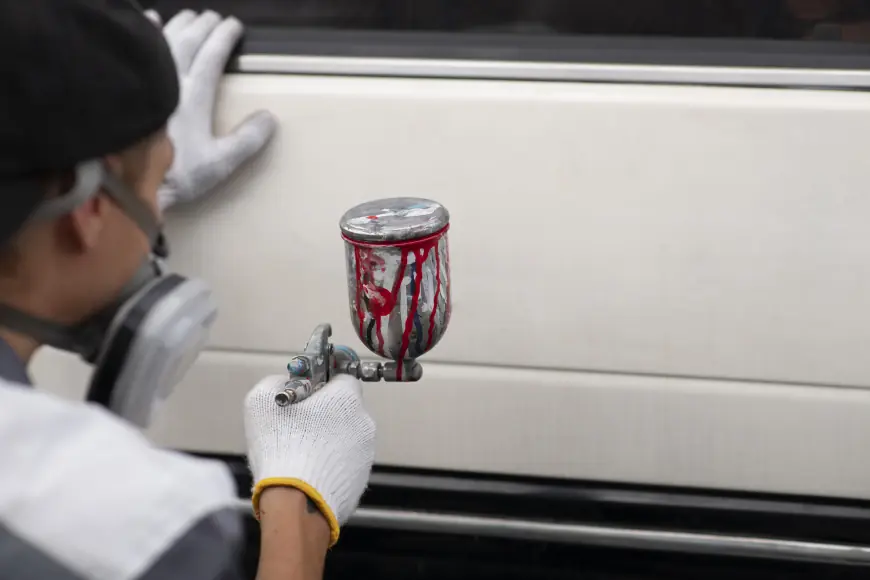The Complete Guide to Paintless Dent Repair
Paintless dent repair is a specialized method of removing dents from vehicle panels without the need for traditional bodywork processes like sanding, filling, or repainting.

Your car's exterior is constantly exposed to hazards that can damage its appearance. From shopping cart dings in parking lots to hail damage during storms, dents and paint scratches are unfortunate realities of vehicle ownership. Fortunately, modern repair techniques have evolved to address these issues effectively and affordably. This comprehensive guide explores two essential automotive repair services: paintless dent repair (PDR) and traditional auto paint repair.
Understanding Paintless Dent Repair (PDR)
Paintless dent repair represents a revolutionary approach to automotive bodywork that has transformed how we address minor vehicle damage. This innovative technique allows skilled technicians to restore dented metal panels to their original condition without affecting the vehicle's factory paint finish.
What is Paintless Dent Repair?
Paintless dent repair is a specialized method of removing dents from vehicle panels without the need for traditional bodywork processes like sanding, filling, or repainting. The technique relies on accessing the damaged area from behind the panel and carefully massaging the metal back to its original shape using specialized tools and techniques.
The process works because modern automotive paint systems are designed to be flexible and durable. When properly executed, PDR can restore a panel to factory condition while preserving the original paint's integrity, color match, and protective properties.
The PDR Process Explained
The paintless dent repair process begins with a thorough assessment of the damage. Skilled technicians evaluate factors such as the dent's size, depth, location, and the condition of the surrounding paint. They also consider the vehicle's construction and accessibility to determine if PDR is viable.
Once the assessment is complete, technicians access the dented panel's back side. This may involve removing interior trim pieces, door panels, or other components to reach the damaged area. The repair process itself involves using specialized tools to apply controlled pressure from behind the panel, gradually working the metal back to its original contour.
The technique requires exceptional skill and patience. Technicians must understand metal memory and behavior, applying precise pressure in specific patterns to avoid overcorrection or creating new damage. The process can take anywhere from 30 minutes for simple dents to several hours for complex damage.
Advantages of Paintless Dent Repair
The benefits of PDR extend far beyond simple cost savings. Perhaps most importantly, PDR maintains the vehicle's original factory paint finish. This preservation is crucial for maintaining the vehicle's value, as original paint is always preferred over aftermarket refinishing work.
PDR is also significantly faster than traditional bodywork. While conventional repair methods can take days or weeks, most PDR repairs are completed within hours. This speed means less downtime for vehicle owners and reduced inconvenience.
From an environmental perspective, PDR is the more sustainable choice. The process eliminates the need for paint, primers, solvents, and other chemicals used in traditional bodywork. This reduction in chemical usage makes PDR an environmentally responsible repair option.
Cost-effectiveness is another major advantage. PDR typically costs 50-70% less than traditional bodywork because it eliminates material costs and reduces labor time. Insurance companies often prefer PDR for qualifying damage because of these cost savings.
Limitations of PDR
Despite its many advantages, paintless dent repair has limitations. The technique is not suitable for all types of damage. Dents that have caused paint damage, such as chips, cracks, or scratches, cannot be repaired using PDR alone. Similarly, very sharp dents or those with creased metal may not be good candidates for this technique.
The location of the dent also matters. Additionally, vehicles with previous bodywork or non-factory paint may not be ideal candidates because the paint may not have the flexibility needed for successful PDR.
Traditional Auto Paint Repair
While PDR is excellent for specific types of damage, many automotive paint issues require traditional repair methods. Auto paint repair encompasses a range of techniques designed to restore, protect, and beautify vehicle exteriors.
Types of Paint Damage
Automotive paint damage comes in many forms, each requiring different repair approaches. Surface scratches are among the most common issues, often caused by car washes, keys, or contact with branches. These scratches may only affect the clear coat or extend deeper into the paint layers.
Chips and gouges represent more serious damage that exposes the underlying metal or primer. These issues often result from road debris, parking lot incidents, or minor collisions. Without proper repair, chips can lead to rust and more extensive damage.
Fading and oxidation are gradual processes that affect older vehicles or those exposed to harsh environmental conditions. UV radiation, acid rain, and pollutants can break down auto paint repair near me molecules, causing color changes and loss of gloss.
More severe damage includes deep scratches, large chips, and impact damage affecting the paint and underlying metal. These issues typically require comprehensive repair involving multiple steps and professional expertise.
What's Your Reaction?
 Like
0
Like
0
 Dislike
0
Dislike
0
 Love
0
Love
0
 Funny
0
Funny
0
 Angry
0
Angry
0
 Sad
0
Sad
0
 Wow
0
Wow
0



















































